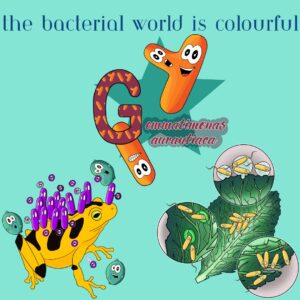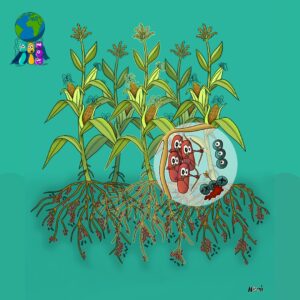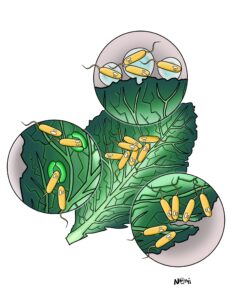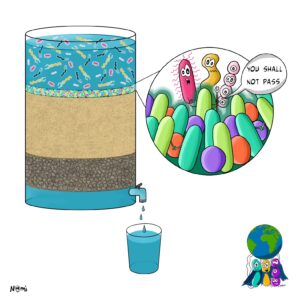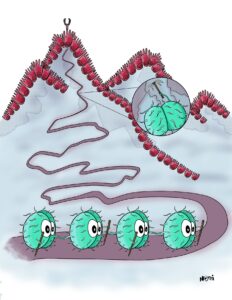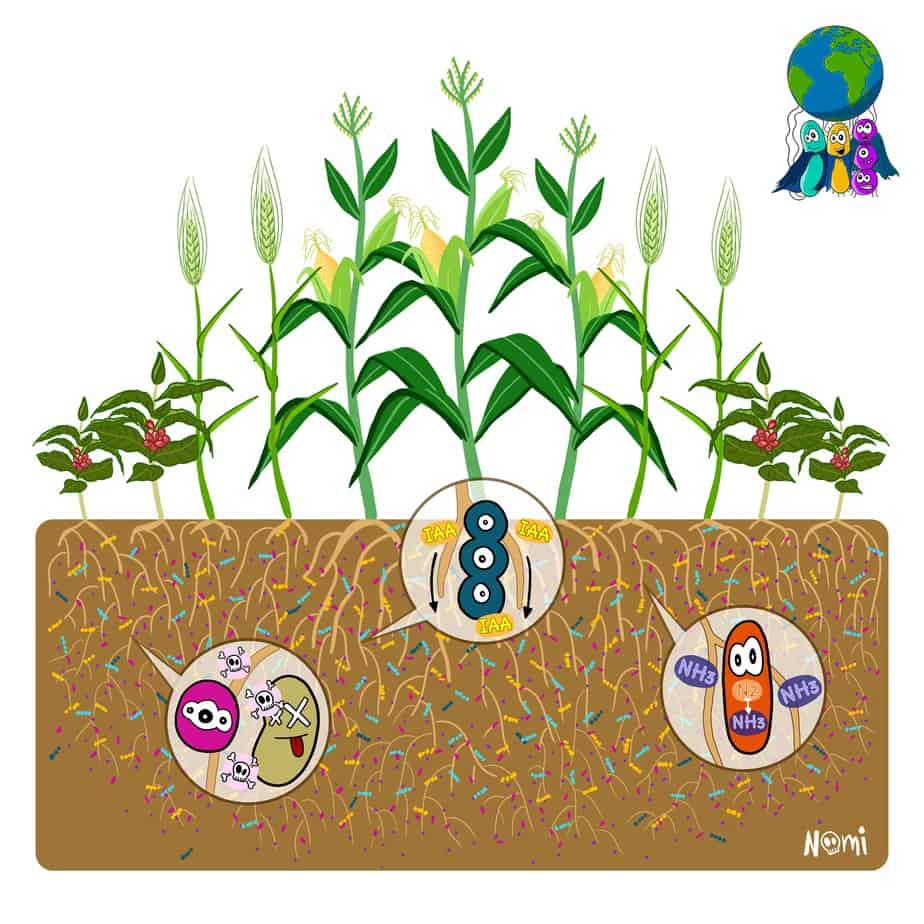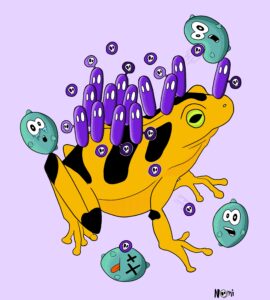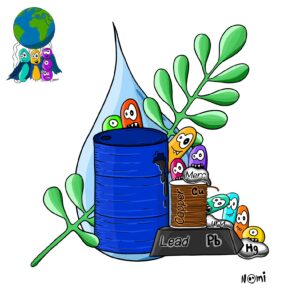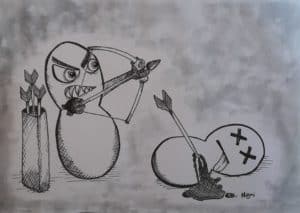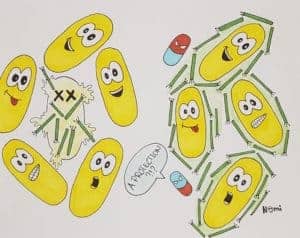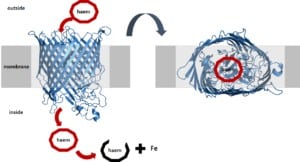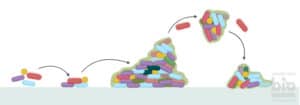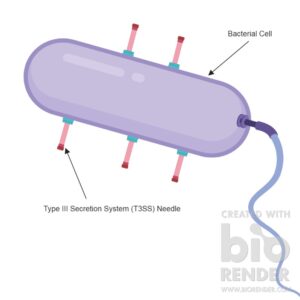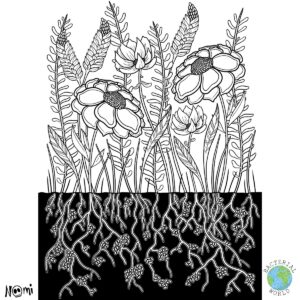
How bacteria help feed the world by fixing nitrogen
Like all organisms, plants need nitrogen to grow and produce crops. But since they cannot directly use nitrogen from the atmosphere, they rely on bacteria to fix the nitrogen for them. In exchange, plants provide them with sugars, energy and protection from their surroundings. Read on to learn more about the nitrogen-fixing superpower of bacteria and why it is crucial for our global food production.

 Pseudomonas bacteria have special weapons to defend themselves, which look like a bow and arrow. Onto that arrow, the bacteria glue toxins that can harm and even kill other microbes. When Pseudomonas comes close to another microbial foe, it shoots that arrow with the toxins into the foe to get rid of its enemy.
Pseudomonas bacteria have special weapons to defend themselves, which look like a bow and arrow. Onto that arrow, the bacteria glue toxins that can harm and even kill other microbes. When Pseudomonas comes close to another microbial foe, it shoots that arrow with the toxins into the foe to get rid of its enemy.